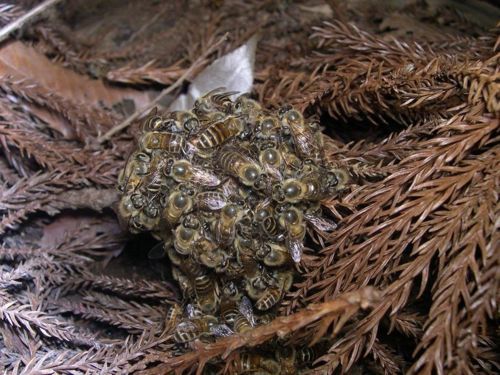The Japanese hot bee ball is one of the strangest defensive strategies in the animal kingdom

Life is a bitch, and animals have devised millions of ways to kill each other and an equal number of ways to avoid getting killed. For Japanes honey bees, their method of defense against the much larger and sting proof giant hornets is to surround the predators in an overwhelming bee ball that overheats the hornets.
That defensive bee ball is probably the strangest method of animal defense you’ll hear about today. A cluster of around 500 Japanese honey bees will first pile on the attacking hornet. The bees then vibrate their flight muscles to produce heat, reaching 47°C, a temperature deadly to the hornet, but not the bees.
Within 30 to 60 minutes, the hornet (and potentially a small number of bees) have perished, but the hive as a whole survives. The European honey bee has none of these defenses, and when those bees are attacked in Japan, their hives are often destroyed.
So, what goes on neurologically when these bees form this ball of death? The researchers extracted insects from a hot defensive bee ball and analyzed their brains. What they found was a marker gene not present in the insect’s European cousin. When in the ball, they have different neural activity to that usually seen in bees — but unlike say, locusts, their brain isn’t activating specially for the ball. This same neural activity is seen in Japanese honey bees when exposed to higher temperatures, but not in the defensive ball.
The researchers theorize that this is actually their way of monitoring how hot things get as they try and stop the wasps — because only a couple of degrees hotter, and it’s enough to kill the bees, too. Which means Apis cerana japonica needs to be careful to increase the temperature enough to kill the attacker, but not its comrades.




Notes